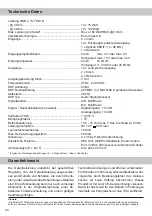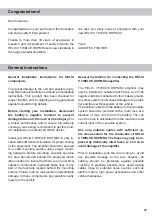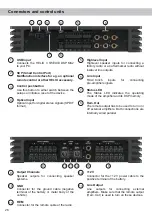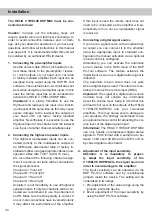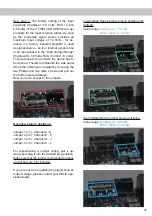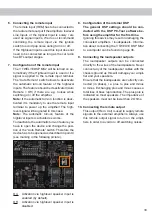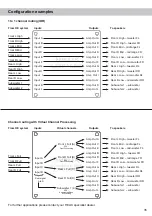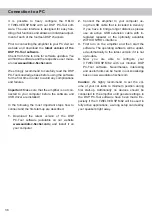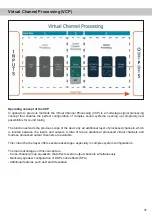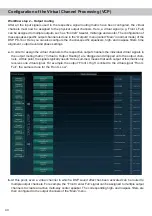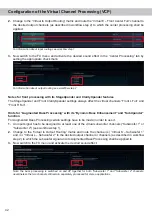
38
– Cross-channel group equalizer
Example application: Active multi-way speaker configuration
If an input signal (e.g. front left) is first routed to a virtual channel (Front L Full) and this signal is then
routed to an active multi-way system (e.g. front left – tweeter, midrange and woofer), the group equalizer
of the virtual channel will influence all assigned output channels in their tonality. The advantage of this
concept is that any amplitude and phase shift of the group equalizer is applied to all channels of the
multi-way configuration simultaneously, thus avoiding any negative impact on the interaction of the
individual speaker channels.
– Multi-way configuration of the DSP sound effects (SFX)
Example application: 2- or even 3-way center speaker
After activating “Virtual Channel Processing”, the DSP sound effects, such as RealCenter management
or Augmented Bass Processing, are also available. These are no longer linked to the outputs but tied
to specific “virtual channels”.
Front Processing:
virtual channels Front L Full (A) and Front R Full (B)
Center Processing:
virtual channel Center Full (E)
Augmented Bass Processing: virtual channels Subwoofer 1 (K) and Subwoofer 2 (L). The subwoofer
volume is also tied to these channels.
This makes it possible to route the DSP sound effects to any number of outputs, for example to realize
2- or even 3-way center speaker configurations. There are hardly any limits to flexibility here.
– Additional features
In addition, the VCP enables the implementation of further new functions. One of these is, for example,
the “Rear Attenuation”. With the help of a remote control, the volume of the virtual channels “Rear L
Full” and “Rear R Full” can be controlled separately. So it is possible even without switching the sound
setup, to adjust the volume of the rear speakers (or any other channel, which is routed through these
channels).
Virtual Channel Processing (VCP)

